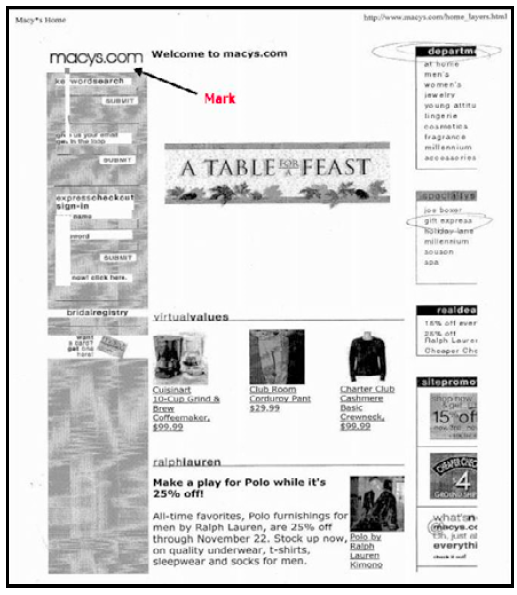Yes, if it shows the trademark used to advertise or sell the services in the application. Generally, the specimen must show:
- A reference to the services
- A direct association between the trademark and the services
- Use of the trademark as the source of the services.
A web page that doesn’t explicitly reference the services may still be acceptable if it shows the trademark used in the rendering or providing of the services.
You must provide an actual screenshot of the web page, the URL, and the date the web page was accessed and/or printed. Merely providing a web page address is not an acceptable specimen.
The web page specimen shown here is acceptable for online retail store services because the MACYS.COM trademark is prominently displayed in the upper-left corner of the web page.
- The goods being sold are shown in the center; menus on the right side of the web page show various categories of goods sold in the online store.
- The MACYS.COM trademark is directly associated with retail store services based on the trademark’s proximity to the goods being sold and the prominent wording “express checkout sign-in” in the left-hand column.
The required URL and date the web page was accessed and/or printed are shown on the specimen.

